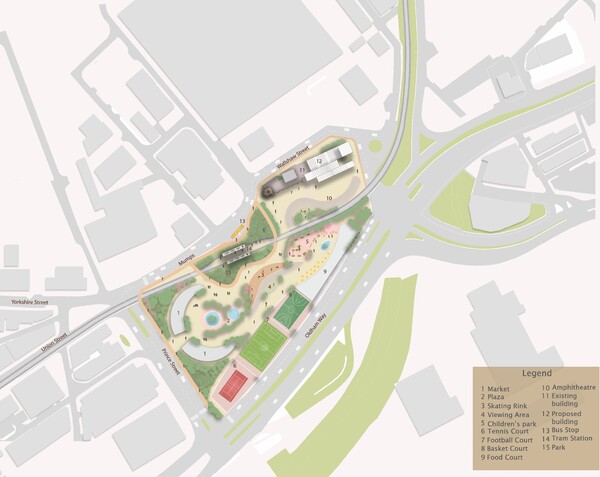REIMAGINING OLDHAM MUMPS
Bangladeshis, Pakistanis, and white people comprise Oldham's three main racial groups. Social differences result from these groups’ severe social disintegration. Poverty is another significant issue in Oldham. In the 1950s and 1960s, immigrants from Pakistan and Bangladesh arrived with the intention of working in the industries and mills for less money than the locals. However, the town’s native-born or migrant population had few job possibilities left after most of the mills closed down due to the country’s industrial downturn in the 1960s and 1970s.
Oldham Mumps is being transformed as part of this project into a community hub where people may learn about one another’s cultures through music, art, language, etc. Providing a market space and restaurants also aids in job creation and allows people to expand their businesses. therefore closing the racial disparity. The neighbourhood, which is surrounded by industrial buildings and has very little green space, provides a learning experience that is connected with nature, using the principle of adaptive reuse, a decaying structure with great architectural significance has been turned into a place for people to learn, grow, and conserve its past while simultaneously designing a contemporary urban fabric.


